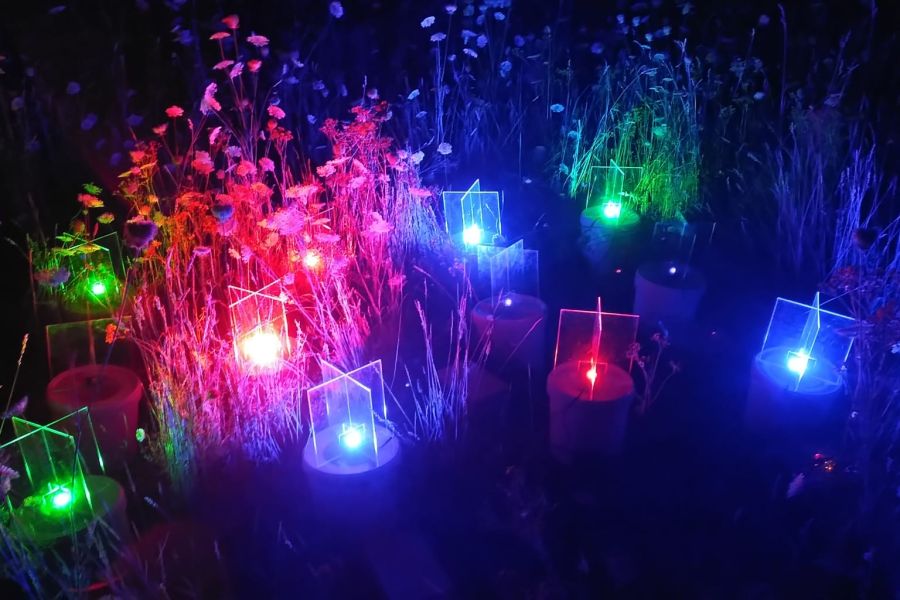Why artificial light at night is a problem for insects – And what we can do about it

Artificial light at night may seem harmless. After all, it helps us see better, feel safer, and enjoy our cities after sunset. But for insects, night-time lighting can be a trap – literally. And since insects are essential for pollination and as food for birds and bats, the ripple effects are widespread. A new BioClock-study shows that both the color and intensity of artificial light influence how insects respond, offering valuable insights for how we design lighting to protect biodiversity.
Lights that lure
Insects like moths, flies, and beetles often display a behavior called positive phototaxis, which means they’re drawn to light. This trait, which may once have helped them navigate by natural sky light, becomes a fatal attraction near streetlights, garden lights, and LED signs. Many insects die from exhaustion or predation after circling lights for hours.
But not all light is equally attractive.
The experiment: What kind of light attracts insects?
Researcher Gabriel Charvalakis from the Netherlands Institute of Ecology and colleagues set up light traps in forested areas, using LEDs in four different colors: ultraviolet (UV), blue, green, and red, and three brightness levels. Over 11 nights, they captured nearly 3,000 insects, representing a variety of species.
Here’s what they found:
- Brighter lights attracted more insects, regardless of color.
- Overall, UV and blue light were the most attractive to insects followed by green light.
- Red light attracted the fewest insects across all groups tested.
The researchers also discovered that different types of insects had different responses to both light brightness and color.
For example:
- Moths (Lepidoptera) were especially sensitive to UV and blue light.
- Flies (Diptera) were equally sensitive to ultraviolet, blue and green, whilst red was less attractive.
- Moths and flies fly toward light at different brightness levels, once a specific brightness level is perceived by them.
This so-called “taxon-specific response” (different groups of insects responding differently) suggests that a one-size-fits-all solution to light pollution doesn’t exist. However, we now know which combinations are least harmful.


What this means for the real world
If we want to protect insect populations, and the ecosystems that rely on them, we need to rethink how we light our nights. This study shows that using low-intensity red light is the least disruptive to insects. These findings can inform smarter lighting design in natural areas, parks, and even urban streets.
The good news? Humans can still see relatively well under red light, so reducing insect harm doesn’t have to mean compromising safety or functionality.
Conclusion:
Light pollution is a growing ecological concern. By tuning both the brightness and color of our lights, we can take simple, effective steps to make nights safer for insects, healthier for ecosystems, and more sustainable for everyone.
Read the full scientific paper here: https://resjournals.onlinelibrary.wiley.com/doi/10.1111/icad.12855

The BioClock Consortium is funded by the NWA-ORC programme of the Dutch Research Council (NWO; project number 1292.19.077).